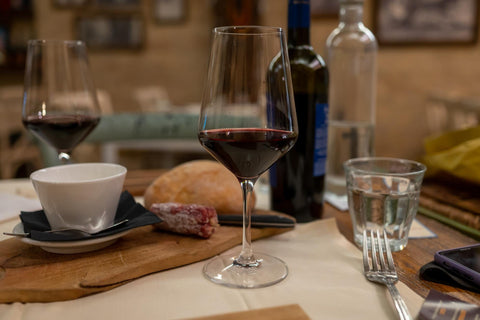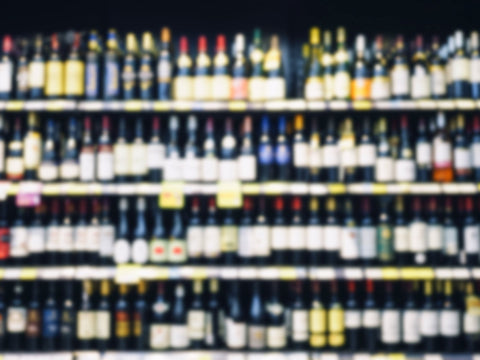We've analyzed the sugar content in a standard serving of the most popular types of red wine and created an easy-to-read infographic detailing our findings.
1. Sweet Red Wine:
Let's start with the indulgent realm of sweet red wines. These wines are characterized by their luscious sweetness, often accompanied by rich fruit flavors. With sugar levels ranging from 30 grams per liter (g/L) and beyond, sweet red wines like Port and late-harvest Zinfandel captivate the palate with their syrupy richness.
2. Cabernet Sauvignon:
Cabernet Sauvignon, renowned for its bold tannins and dark fruit flavors, typically falls on the drier side of the spectrum. With sugar levels averaging around 2-4 g/L, this classic varietal offers a balance of fruitiness and dryness, making it a favorite among red wine enthusiasts seeking complexity.
3. Merlot:
Merlot, known for its velvety texture and plum-like flavors, shares a similar sugar profile to Cabernet Sauvignon, with sugar levels hovering around 2-4 g/L. This versatile varietal strikes a harmonious balance between sweetness and acidity, making it an excellent choice for both casual sipping and food pairing.
4. Petite Sirah:
Bold and robust, Petite Sirah boasts deep color and intense flavors of dark berries and spice. With sugar levels typically below 4 g/L, this varietal leans towards the drier end of the spectrum, showcasing its full-bodied character with minimal sweetness.
5. Pinot Noir:
Pinot Noir, celebrated for its elegance and finesse, tends to exhibit lower sugar levels, usually below 2 g/L. This lighter-bodied red wine emphasizes fruit purity and nuanced flavors, offering a delicate sweetness that enhances its complexity.
6. Zinfandel:
Zinfandel, known for its versatility and fruit-forward profile, encompasses a wide range of styles, from dry to off-dry to sweet. While dry Zinfandels may have sugar levels similar to Cabernet Sauvignon, late-harvest or dessert Zinfandels can contain upwards of 10 g/L or more, delivering a delightful sweetness.
7. Barolo:
Hailing from Italy's Piedmont region, Barolo is revered for its bold tannins and complex flavor profile, which often includes notes of cherry, tar, and earth. With sugar levels typically below 4 g/L, Barolo showcases a dry, structured character that pairs beautifully with hearty dishes.
8. Malbec:
Malbec, with its plush texture and ripe fruit flavors, strikes a balance between sweetness and acidity. Sugar levels in Malbec wines typically range from 2-4 g/L, allowing the varietal's vibrant fruitiness to shine while maintaining a dry finish.
9. Cabernet Franc:
Cabernet Franc, known for its herbaceous notes and red fruit flavors, shares similar sugar levels to Cabernet Sauvignon and Merlot, typically around 2-4 g/L. This varietal offers a nuanced sweetness that complements its aromatic complexity.
10. Petite Verdot:
Petite Verdot, often used as a blending grape, can also stand alone to produce full-bodied red wines with dark fruit flavors and robust tannins. With sugar levels similar to other red varietals, Petite Verdot showcases a dry, structured profile that pairs well with hearty fare.
In a shameless attempt to get you to linger and scroll we parked the easy-to-read infographic with our findings all the way down here.





Comments (0)
There are no comments for this article. Be the first one to leave a message!